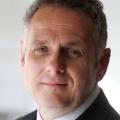A NORTH-EAST school has benefitted from the success of a Dragons’ Den entrepreneur with a lesson that was definitely not for the squeamish.
Sixty Year 9 and 10 pupils at Polam Hall School, in Darlington, took part in a revolutionary ‘Developing a Doctor Day’ to give them a taste of what a career in medicine might involve.
The ITAE Group’s Operating Theatre Live tours the UK bringing live dissection of real specimens to schools, colleges, universities and the NHS trust.
The pupils spent the day in scrubs and masks, investigating the internal workings of a pig, which is the animal closest in anatomy to a human.
Joanne Sheldon, one of the clinical presenters said: “We source the parts from abattoirs and butchers, where they would normally go into the incinerator as waste.
“The founder of the company, Samuel Piri, was a teacher himself, and was concerned that there was no opportunity in schools for students to get this sort of experience. He launched the business in the UK, and then bid successfully on Dragon’s Den to get funding to take the idea to Europe and the USA.
“The kids love it. They can see how things fit together in the body, learn clinical skills, and administer anaesthetic on life-like, plastic bodies.
“They have the chance to examine eyes, hearts, lungs and the digestive system. Even the squeamish ones get stuck in.”
Aimee Jones, Head of STEM Faculty at Polam, who arranged the visit, said: “Some of our students have expressed an interest in following careers in medicine, nursing and sports therapy, and this is a great opportunity for them to experience some of the skills that they might require.
“They wouldn’t normally have the chance to dissect a pig’s head, examine the brain, the eyes, the nervous system and internal organs.
“We had to limit numbers to 60, but there was a lot of interest, so I’m sure we’ll do it again.”
Year 9 student, Fynn Lumley, 14, is interested in following a career in orthopaedic surgery and found the day very informative.
“It’s been really good. I was interested to see how the eye was held in the head by the muscles, and having to find the right muscle to remove it,” he said.






Comments: Our rules
We want our comments to be a lively and valuable part of our community - a place where readers can debate and engage with the most important local issues. The ability to comment on our stories is a privilege, not a right, however, and that privilege may be withdrawn if it is abused or misused.
Please report any comments that break our rules.
Read the rules here